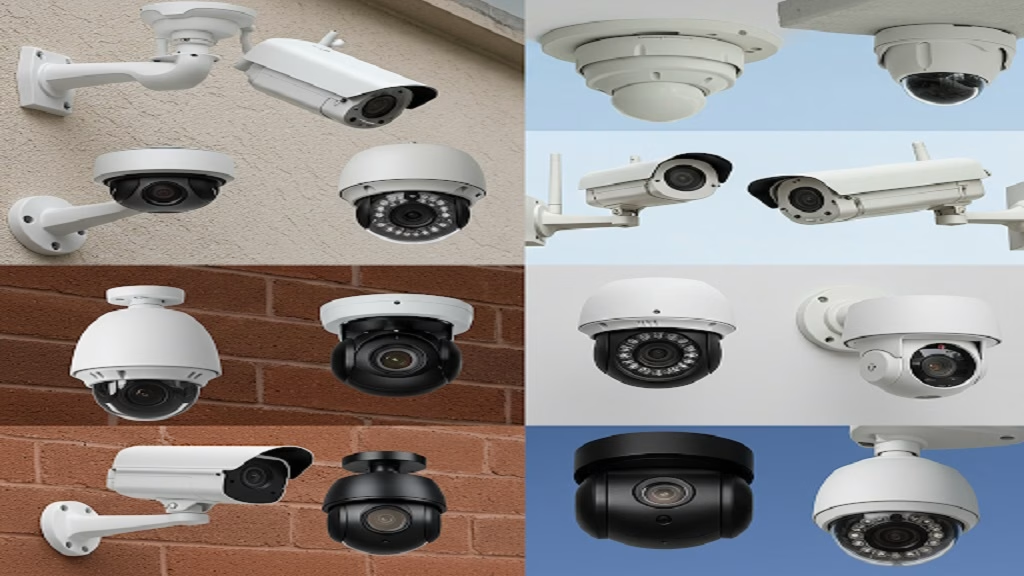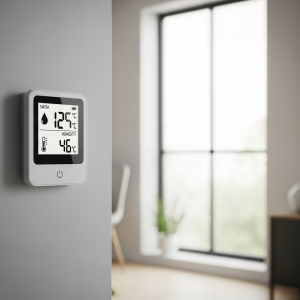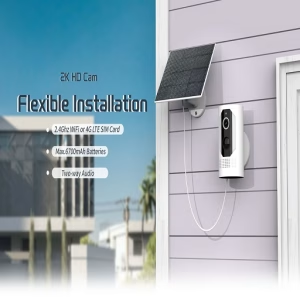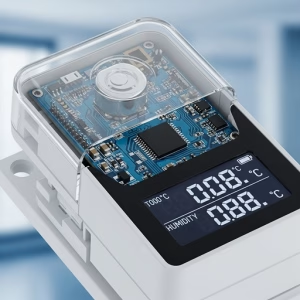Security vs Surveillance Cameras: What’s the Difference?
(In Depth Guide)
Introduction: Demystifying Security VS Surveillance Cameras
In today’s world, where security and safeguarding are increasingly important, homeowners and business owners alike are actively seeking the best ways to protect their properties, people, and assets. Security vs Surveillance Cameras are two solutions that are frequently mentioned. However, these two terms are often used interchangeably, leading to confusion for many when trying to understand their subtle differences.
This article aims to delve into the distinctions between Security vs Surveillance Cameras, clarifying their respective functions, applications, and key features. By understanding these differences, you can make more informed decisions and choose the system that best suits your specific needs. We will explore technical details, practical applications, and how to select the right camera based on your requirements.
Security Cameras: The Shield of Proactive Defense
Security cameras, as the name suggests, primarily aim to prevent crime and unauthorized activity. They are often designed to have a visible deterrent effect and can trigger alarms or take other proactive measures when suspicious activity is detected.
Core Functions and Features
- Proactive Deterrence: Security cameras often have a conspicuous appearance and are installed in prominent locations to deter potential criminals.
- Real-time Alerts: Many security cameras are equipped with motion detection, sound detection, and other features that can instantly send alert notifications to users, such as through mobile applications, email, or SMS, when abnormal situations are detected.
- Integration with Security Systems: Security cameras can often be integrated with other security devices, such as alarms, door/window sensors, infrared detectors, forming a more comprehensive security network.
- Two-Way Communication: Some advanced security cameras support two-way audio communication, allowing users to communicate with visitors or intruders through the camera.
- Remote Control and Monitoring: Users can remotely view live video feeds, control camera direction (for PTZ models), and receive alerts via the internet.
- High-Quality Recording: While prevention is the primary purpose, security cameras usually also have high-quality recording capabilities for evidence collection and analysis in the event of an incident.
- Durability and Tamper Resistance: Security cameras are often designed to be more robust and durable, capable of withstanding harsh weather conditions and potential vandalism.
Main Application Scenarios
- Residential Security: Protecting homes from burglary, vandalism, and other criminal activities.
- Commercial Security: Monitoring shops, offices, warehouses, etc., to prevent theft, employee misconduct, and unauthorized access.
- Perimeter Protection: Monitoring fences, entrances, parking lots, and other areas to detect potential intruders early.
- Critical Infrastructure Protection: Monitoring power plants, water treatment facilities, transportation hubs, and other critical infrastructure to prevent terrorism and sabotage.
Advantages
- Strong Deterrent Effect: Visible cameras can effectively deter potential criminals.
- Real-time Response Capability: Alert notifications and two-way communication allow users to take timely action.
- Integration with Other Security Systems: Provides a more comprehensive security solution.
Disadvantages
- Potentially Higher Cost: Security cameras with advanced features are often more expensive than basic surveillance cameras.
- Potentially More Complex Installation: Integration with existing security systems may require professional installation.
Surveillance Cameras: The Passive Recording Eyes
The primary purpose of surveillance cameras is to record and store video data for review and analysis after an event has occurred. They typically focus on providing clear and detailed video evidence.
Core Functions and Features
- Continuous Recording: Surveillance cameras often record 24/7, capturing all events that occur within their field of view.
- Event-Triggered Recording: Some surveillance cameras also support event-triggered recording, meaning they only start recording when motion or sound is detected, to save storage space.
- Large Storage Capacity: Surveillance systems are usually equipped with high-capacity digital video recorders (DVRs) or network video recorders (NVRs) to store large amounts of video data.
- Clear Video Quality: Surveillance cameras typically have high-resolution image sensors to capture clear and detailed video footage, making it easier to identify people and objects.
- Timestamp and Data Logging: Recorded data usually includes precise timestamps, making it easy to trace the time and sequence of events.
- Concealment: Some surveillance cameras are designed to be inconspicuous, not drawing attention, to record information without being noticed.
- Post-Event Analysis: Surveillance footage is primarily used for investigation and analysis after an event has occurred, such as identifying perpetrators and understanding the sequence of events.
Main Application Scenarios
- Retail Surveillance: Preventing theft by customers and employees, monitoring point-of-sale transactions.
- Industrial Surveillance: Monitoring production lines, warehouse operations, ensuring safe production and quality control.
- Traffic Monitoring: Monitoring road traffic conditions, recording traffic accidents, analyzing traffic flow.
- Public Area Surveillance: Monitoring parks, streets, schools, and other public areas to maintain social order.
- Home Surveillance (Post-Event Analysis): Recording household activities, such as monitoring children and pets, or providing evidence in case of accidents.
Advantages
- Provides Detailed Event Records: Helps in understanding the true circumstances of an event.
- Suitable for Post-Event Analysis and Investigation: Can be used as evidence in legal proceedings or internal investigations.
- Lower Cost for Some Models: Basic surveillance cameras are often more affordable than feature-rich security cameras.
Disadvantages
- Limited Deterrent Effect: Less conspicuous surveillance cameras may not effectively deter crime.
- Weaker Real-time Response Capability: Primarily used for post-event analysis, unable to take immediate action when an event occurs.
- Storage Management Needs: Large amounts of video data require effective storage and management systems.
Key Differences: At a Glance
To more clearly understand the differences between security cameras and surveillance cameras, we have summarized the following key points:
- Primary Purpose: Security cameras focus on prevention and real-time response, while surveillance cameras focus on recording and post-event analysis.
- Deterrent Effect: Security cameras usually have a stronger deterrent effect, while surveillance cameras have a relatively weaker deterrent effect.
- Real-time Alerts: Security cameras are often equipped with real-time alert features, while surveillance cameras usually do not have or have weaker versions of these features.
- Two-Way Communication: Some security cameras support two-way communication, while surveillance cameras typically do not.
- Integration with Other Systems: Security cameras are more commonly used to be integrated into more comprehensive security systems.
- Recording Purpose: Recordings from security cameras are used as evidence after an event, while recordings from surveillance cameras are mainly used for continuous recording and post-event analysis.
Security Cameras vs Surveillance Cameras: Key Differences
| Feature | Security Camera | Surveillance Camera |
|---|---|---|
| Primary Purpose | Prevention, Real-time Response | Recording, Post-Event Analysis |
| Deterrent Effect | Strong | Weak |
| Real-time Alerts | Usually Present | Usually Absent or Weak |
| Two-Way Communication | Some Models Support | Typically Not Supported |
| System Integration | Common | Less Common |
| Recording Purpose | Event Evidence | Continuous Recording, Post-Event Analysis |
In-Depth Discussion of Technical Details
In addition to core functions and application scenarios, security cameras and surveillance cameras also differ in some technical details.
Image Sensors and Resolution
Both rely on image sensors to capture light and convert it into electronic signals. However, surveillance cameras often place more emphasis on high resolution, such as Full HD (1080p), 4K, or even higher, to ensure that recorded details are clearly visible. Security cameras, while ensuring a certain level of resolution, may focus more on other features such as low-light performance and wide-angle views.
Lens Types and Field of View
Both can be equipped with different types of lenses, such as fixed lenses, varifocal lenses, and fisheye lenses. Security cameras, to achieve a wider monitoring range and reduce blind spots, may be more inclined to use wide-angle lenses. Surveillance cameras, on the other hand, may choose lenses with different focal lengths depending on the specific monitoring needs to capture details in particular areas.
Night Vision Capabilities
Night vision is crucial for 24/7 monitoring. Both types of cameras commonly use infrared (IR) LEDs to achieve night vision. However, some more advanced security cameras may employ starlight sensors or color night vision technology, which can provide clearer and richer images even in low-light conditions.
Network Connectivity and Protocols
Modern security cameras and surveillance cameras usually support network connectivity and can connect to the internet via Ethernet or Wi-Fi. They may support different network protocols, such as TCP/IP, HTTP, RTSP, etc., for remote access and management.
Storage Methods
Security cameras often support multiple storage methods, such as local SD card storage, cloud storage, and connection to a network video recorder (NVR). Surveillance systems typically rely on digital video recorders (DVRs) or network video recorders (NVRs) for centralized storage and management of large amounts of video data.
Smart Features
In recent years, artificial intelligence (AI) technology has been increasingly applied to security and surveillance cameras. These smart features include:
- Human Detection: Accurately identifies human figures in the video, reducing false alarms.
- Vehicle Detection: Identifies vehicles in the video.
- Facial Recognition: Recognizes and records the facial information of specific individuals.
- Object Recognition: Identifies specific objects, such as packages or animals.
- Area Intrusion Detection: Triggers an alarm when an object or person enters a predefined area.
- Line Crossing Detection: Triggers an alarm when an object or person crosses a predefined line.
These smart features are more common in security cameras, which can improve the accuracy and effectiveness of alarms. Surveillance cameras are also beginning to integrate some smart analysis features, such as smart search and behavior analysis, to help users quickly find and analyze recorded data.
Power Supply Methods
Both types of cameras can be powered by power adapters. Some security cameras also support Power over Ethernet (PoE), which transmits both power and data through a single Ethernet cable, simplifying the installation process. Wireless security cameras often use battery power and require periodic charging or battery replacement.
Protection Rating
For outdoor cameras, the Ingress Protection (IP) rating is very important, indicating the camera’s ability to protect against foreign objects and water. Security cameras, often installed outdoors, usually have a higher IP rating, such as IP66 or IP67, to ensure they can operate normally in harsh weather conditions. Surveillance cameras installed indoors may have lower IP rating requirements.
How to Choose the Right Camera for Your Needs?
When choosing between a security camera and a surveillance camera, you need to carefully consider your specific needs and application scenarios. Here are some key factors to consider:
- Monitoring Purpose: Are you primarily focused on preventing crime and real-time response, or on recording events and conducting post-event analysis?
- Monitoring Area: Do you need to monitor indoor or outdoor areas? What is the coverage area?
- Budget: What is your budget? The prices of cameras with different features and performance vary greatly.
- Installation Convenience: Do you need a simple DIY installation, or do you require professional installation services?
- Required Features: Do you need specific features such as night vision, two-way communication, motion detection, or smart analysis?
- Storage Needs: How long do you need to store video data? Do you choose local storage or cloud storage?
- Integration Needs: Do you need to integrate the camera with other security devices?
- Laws and Regulations: Understand local laws and regulations regarding the installation and use of surveillance equipment.
Selection Recommendations
- If your primary focus is on preventing crime and real-time response: Choose security cameras with a visible appearance, real-time alert features, and two-way communication capabilities.
- If your primary focus is on recording events and conducting post-event analysis: Choose surveillance cameras with high resolution, large storage capacity, and clear night vision capabilities.
- If you need a comprehensive security solution: Consider integrating security cameras with surveillance cameras and other security devices (such as alarms and sensors).
- For residential users: Consider installing some conspicuous security cameras as a deterrent, while also installing surveillance cameras in key areas for recording.
- For commercial users: Typically require a more comprehensive surveillance system, including surveillance cameras covering key areas and security cameras for perimeter protection.
Conclusion: Security vs Surveillance Cameras, Choosing the Best Solution
In conclusion, while Security vs Surveillance Cameras are often used interchangeably, they have distinct differences in their primary purpose, features, and application scenarios. Security cameras are more focused on proactive defense and real-time response, while surveillance cameras are more focused on passive recording and post-event analysis.
By thoroughly understanding these differences and your specific needs, you can make a more informed decision and choose the security and surveillance solution that best suits you. Whether it’s protecting your home, your business, or your valuable assets, selecting the right camera system is a crucial first step.
We hope this article has helped you unravel the mystery of security and surveillance, better understand these two important security technologies, and provide valuable guidance for your choices. When selecting and installing a camera system, be sure to consider all relevant factors and make the best decision based on your actual needs.





